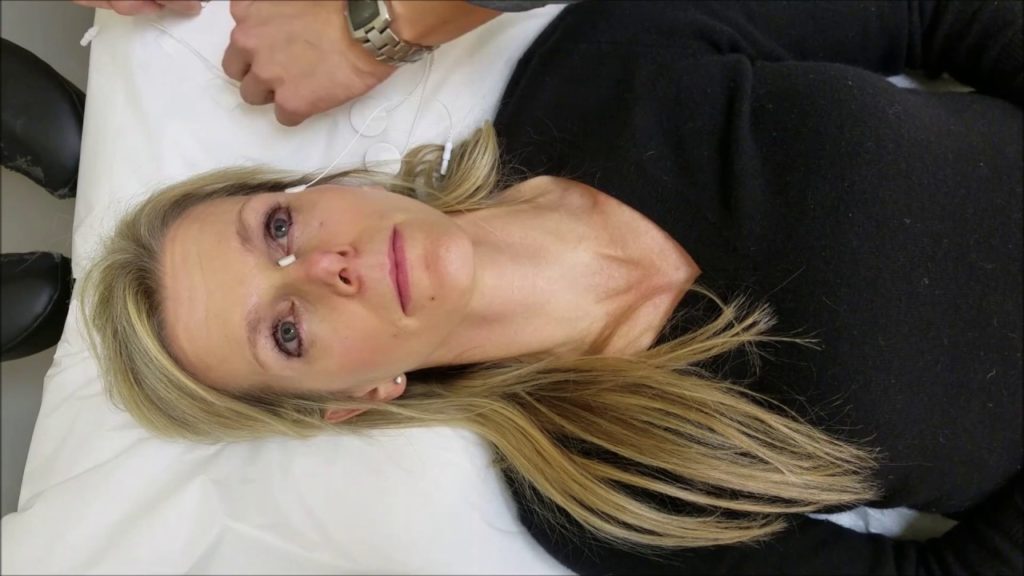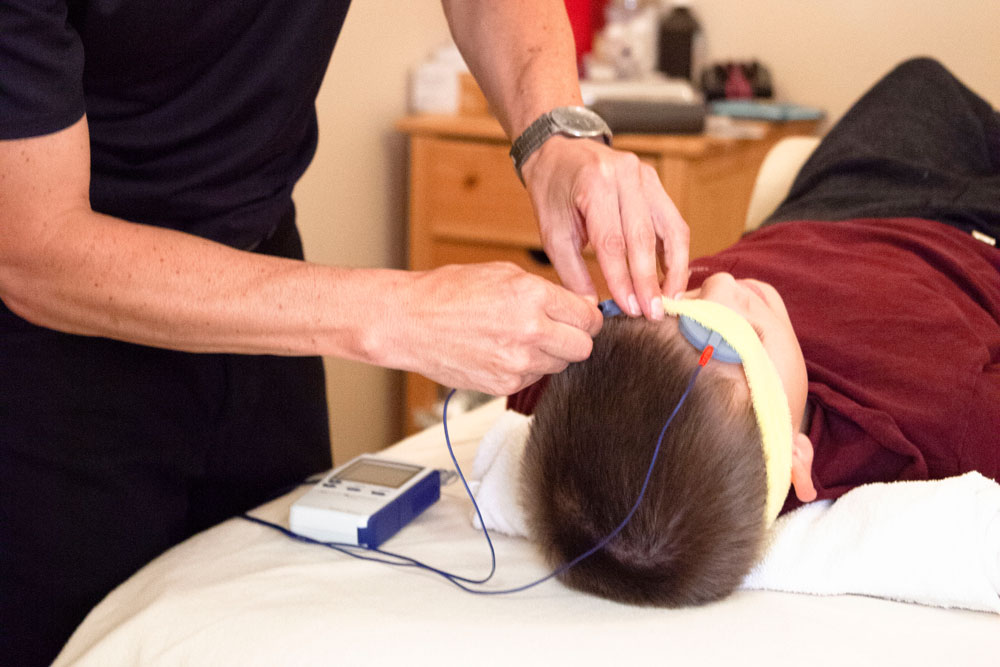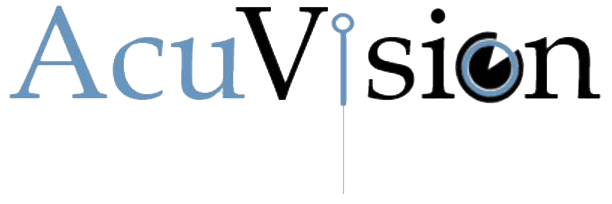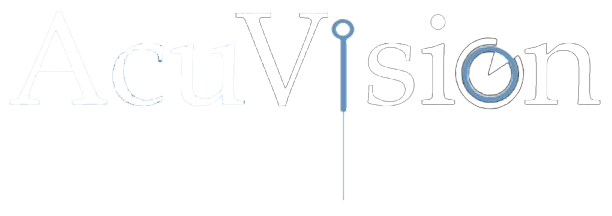Ophthalmic Electro-Therapies
Electro-Acupuncture

Eye conditions that seem to respond favorably to electro acupuncture include RP, dry AMD, Optic atrophy, Retinal detachment, retinal occlusions, normal tension glaucoma and lazy eye.
Electro acupuncture improved blood flow to the eye, stimulates the photoreceptors, optic nerve and entire visual system by waking up dormant cells. It also stimulates he release of endogenous growth factors and stem cells which help the damaged and sick nerve cells repair and regenerate.
Dr. Rosenfarb has developed specific ophthalmic electro-acupuncture protocols used in research studies with both Johns Hopkins University and NOVA Southeastern University. His methods are evidence-based and research proven to improve lost vision in most cases.
Dr. Rosenfarb recently teamed with researchers at Johns Hopkins University on the first ever clinical study to determine the efficacy of treating Retinitis Pigmentosa with acupuncture and other TCM therapies. Dr. Rosenfarb drew on his extensive training and clinical experience to develop the treatment protocol and trained staff at Johns Hopkins University to administer it to study participants.
Based on the success of that initial study, the NIH is funding a second, expanded clinical study in 2014 that will once again utilize Dr. Rosenfarb’s treatment protocol. The first peer-reviewed study was recently published in Clinical and Experimental Optometry.
To view the article, click here (Dr. Rosenfarb Research Article)
Micro Current Stimulation
MicroCurrent Stimulation (MCS) is an enhanced adaptation of a FDA approved therapy used by anesthesiologists, orthopedic surgeons, plastic surgeons and rehabilitative specialists to promote the healing of wounds and transplanted tissues as well as to treat pain.
Micro Current works the same way that electro-acupuncture does, just less potent and can be used as part of an adjunctive home-care treatment plan.
How MCS Works:
Although the exact mechanism of action of MCS has not yet been established scientifically, research suggests that microcurrent electrical stimulation device approximates the level of electrical activity present in a healthy eye, resulting in stimulating retinal activity and energizing dormant cells, as well as improving microvascular circulation, nerve conduction and velocity.
Microcurrent stimulation increases ATP (energy) synthesis in the retinal cells needed for membrane viability and waste management (a major concern for those with dry macular degeneration as excess waste not reabsorbed and eliminated results in waste accumulation called “drusen”).
The treatment of patients with Macular Degeneration and Retinitis Pigmentosa entails the periodic administration of very precise amounts of tightly controlled electrical current through electrodes applied to the skin at specific areas around the eye. The electrical current is used to stimulate the retina as well as the diseased macula in order to help protect sight. The procedure is safe, noninvasive and painless and no side effects or adverse reactions have been observed.
There are several metabolic processes that are enhanced through the use of Microcurrent Stimulation. The first to boost the cells’ ability to rid themselves of waste products. A cell with “stuck” waste products becomes a dead cell and interferes with cellular communication throughout the area where it is located. Cells need to take in nutrients and eliminate waste like all other living organisms. The energy supplied by Microcurrent Stimulation innervates cells to become vital and less sluggish.
FDAs Position:
Diagnosis:
When ordering as a part of your home care treatment plan, please let us know your specific eye condition.
Contraindications:
MCS is contraindicated for those with pacemakers, or who are pregnant. If you have a neurological disorder such as epilepsy, please discuss with your doctor first before using MCS.
Transcorneal Electric Stimulation (TES)

TES has multiple advantages over traditional treatments, such as being minimally invasive and relatively easy to perform on most patients.
Series of animal experiments have shown that TES protects the retinal neuron from traumatic or genetic induced degeneration. Laboratory evidences support its utilization in ophthalmological therapies against various retinal and optical diseases including retinitis pigmentosa (RP), traumatic optic neuropathy (ON), anterior ischemic optic neuropathy (AION), and retinal artery occlusions (RAOs).
Several pioneering explorations sought to clarify the functional mechanism underlying the neuroprotective effects of TES. It seems that the neuroprotective effects should not be attributed to a solitary pathway, on the contrary, multiple mechanisms might contribute collectively to maintain cellular homeostasis and promote cell survival in the retina.
Transorbital Alternating Current Stimulation (TACS)

Trans Orbital Alternating Current Stimulation (TACS) s a non-invasive and non-surgical way to naturally restore or improve vision, with stable outcomes and without risks of side effects.
These positive outcomes are accomplished through the application of weak electrical current pulses which stimulate partially damaged retinal cells and improve the conductivity of signals to the brain.
TACS can’t replace damaged cells or regenerate optic nerves; instead it increases the functionality of preserved cells on the retina and enhances the activity along optic nerves. This non-invasive therapy enhances the overall activity of the visual system and leads to functional restoration.
Dr. Rosenfarb been developing methods for vision recovery and treating patients suffering vision loss from optic-nerve atrophy, abnormal retina and brain disorders. TACS is a non-surgical way to restore visual function, accomplished by non-invasive electrical stimulation of different retinal cells (cones, rods, ganglion cells) and optic nerve fibres as well. TACS does not replace damaged cells; instead it increases the functionality of preserved neurons on the retina and enhances the activity of the visual system overall. It improves the global functioning of preserved-neurons on the retina and the conductivity along optic-nerve fibers
How does TACS work?
The application of weak electrical currents to areas around the eye influences brain electrophysiology on a network level. This, in turn, affects the sensitization of deafferented regions or the synchronization (entrainment) of neuronal network firing with long-lasting (plasticity) changes.
Results of treatment have show to safely and effective therapeutic approach can produce partial visual-field enlargement and provide increased visual acuity that positively affects daily living.
We have found TACS to be very useful for our pediatric as part of our AcuVision Jr. program. For adults we have found TACS to be especially effective for cases of acute-traumatic and chronic-degenerative retinal and optic nerve dysfunction.

